The first time I ever plugged into a Ross Pedal, a raw symphony of tones echoed from my guitar unlike anything I’d experienced before. This was a moment that dramatically shifted my understanding of what a guitar effect could truly deliver. But more about that later.
As a seasoned guitar journalist and musician, I’ve borne witness to the evolution and proliferation of innumerable guitar pedals. Among these, Ross Pedals, a product line of Ross Electronics, has consistently demanded my attention and intrigue.
Interestingly, an eclectic mix of guitarists, both budding novices and well-established virtuosos, have somehow managed to completely overlook Ross Pedals. Rather bold a claim, isn’t it? I’ll explain why soon enough.
In this comprehensive overview, we’ll delve into the extraordinary world of Ross Guitar Effects—discussing their historical significance, original series, reissues, unique features, and how they measure up against competitors. Trust me, by the end of this journey, you’ll develop a newfound appreciation not only for these underrated gems but more importantly for the magical universe of guitar pedals.
Join me as I recount my firsthand experiences, provide expert insights, and trot through the marvel that Ross Pedals encapsulate, ensuring that this exploration is both profound and fascinating.
Historical Significance of Ross Pedals
Original Ross Pedals
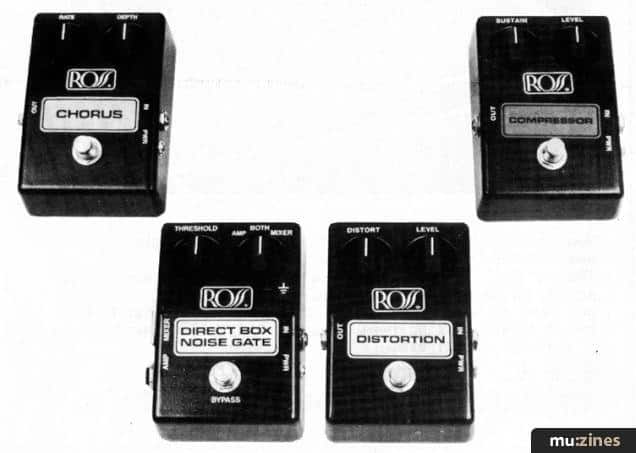
In my experience playing and reviewing vintage guitar gear, the original Ross pedals hold an esteemed position. The original Ross pedals, particularly the Ross Compressor, are a part of history that continue to shape the sound and tone of guitar playing today. From the late 70s to the early 80s, Ross, then an unknown name, introduced their own guitar effect pedals that amassed a cult following amongst guitarists. They’re undoubtedly seen as timeless classics in the realm of vintage effects pedals.
The original Ross Compressor is especially worth mentioning. It had this warm, natural sustain and gave the guitar a smooth, velvety texture like no other. A significant charm about these original pedals is their straightforward design, featuring a minimalist setup with just two or three knobs for adjustment. Yet, beyond the simplicity lay an array of tones waiting to be harnessed. These factors made this piece of equipment both accessible and endlessly creative.
The Ross Compressor’s design and functionality influenced many later adaptations and clones. Its transparent compression, along with its ability to enhance tones without drastically changing them, became a sought-after quality in subsequent pedals. What began as an underdog effect pedal, later rose to leave an indelible impression on future designs and iterations. Its relevance remains, particularly for those enamoured with the qualities and characteristics of the vintage sound.
Every time I plug in one of these original Ross guitar effect pedals, I can’t help but appreciate their rich, distinctive output. Robust, reliable and timeless, they delivered a blend of versatility and individuality. In a world swayed by digital wave, they remind us of the irreplaceable warmth and depth available in these analogue devices.
No discussion on the historical significance of Ross pedals would be complete without acknowledging these original efforts. These under-the-radar vintage pedals were not just products; they were an innovation that contributed to the evolution of guitar effects pedals. The original Ross pedals are just as much a part of our musical past as they are of our present, continually influencing the sound that comes from our stages and studios.
As we move towards discussing the reissue of Ross pedals, bear in mind the legacy of the original pedals. They set the standard and paved the way for the restyled versions we see today. This fact highlights the enduring influence and historical significance of the original Ross pedals in the world of guitar effects. While advancements have been made, the core of what made the original Ross pedals great remains consistently present in each reissue and successive model.
Ross Pedals Reissue
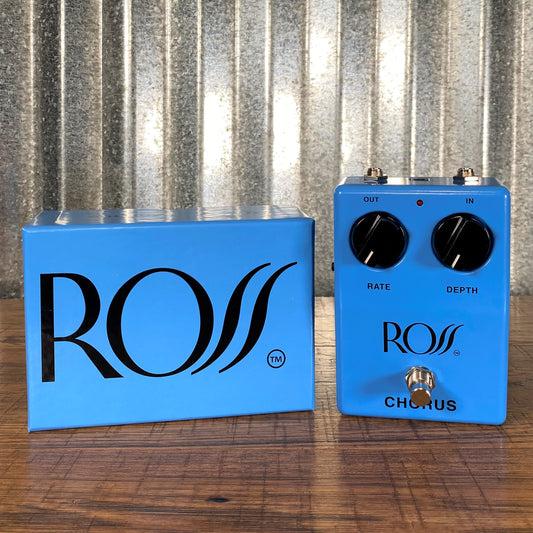
Having explored the roots and inherent magic of the original Ross pedals in the preceding segment, it’s invigorating to witness their revival. The narrative of musical history continues. This key milestone is marked by none other than the highly anticipated Ross Pedal Reissue.
JHS, acclaimed for their meticulous reproductions, has rekindled the essence of Ross style pedals with their reissues. As an audio gear enthusiast, I had been on tenterhooks when the announcement about the reissue surfaced. Each testing session on these revamped legends affirmed that the Ross Pedals’ historical significance does not merely belong to the past. It strides confidently into the present era, all while anchoring its deep-seated roots.
I harnessed established Ross pedal schematics for my personal evaluation, ensuring an authentic use-test experience. I quickly noticed how broadly versatile these reissued pedals are. They reignite the timeless Ross tonal character, yet manage to contemporize the implementation. From old-school blues to avant-garde soundscapes, the reissues performed outstandingly.
On this explorative journey thus far, it’s clear that the Ross Pedal Reissue has made a significant contribution to the music gear world. They’re not simply rehashing old designs; they’re celebrating Ross’s legacy, revitalizing it for today’s collection of artists. They’ve managed to recapture the spirit of the original Ross pedals, amplifying that magic for the modern guitarist. The past and present intertwine, breathing life into musical nuances waiting to be discovered.
As we move onward in our comprehensive exploration of Ross’s broad sound spectrum, we’ll delve deeper into the defining features that characterize these guitar effects giants. The journey sails further, charting the timeless saga of Ross Pedals, their comparison with contemporaries, including the likes of MXR, and more.
Features of Ross Guitar Effects
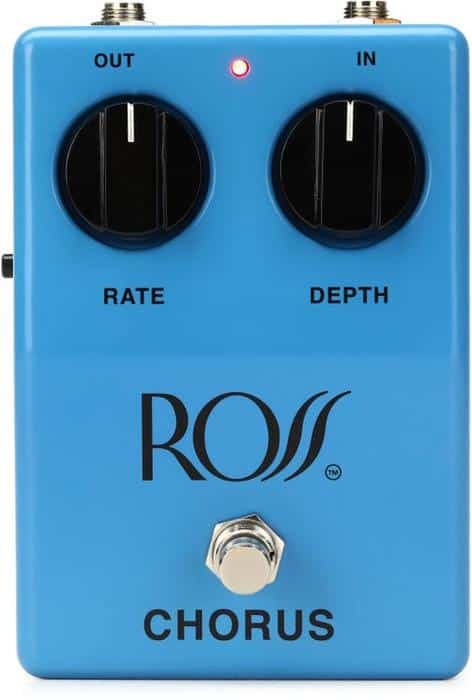
As someone with a storied affair with the world of effect pedals, I’ve explored a plethora of their features, bearing witness to their magic and marvel. But there’s a certain charm when it comes to Ross guitar effects. This charm does not solely stem from their vintage nature; rather, it lies in the heart of their unique sound, the advanced features they bring to the field, setting them apart from the crowd. So, what sets Ross guitar effects apart from other competing brands in the market? Let’s delve into the heart of their unique sound.
Allow me first to discuss one of Ross’s most commendable characteristics: their prowess in tone shaping. The diversity they bring in terms of tone control is truly unparalleled. Whether it’s an electric guitar’s raw sound or an embellished, harmonic-rich acoustic, Ross gives you the autonomy to shape your output to exact preferences. Their powerful controls offer fine-tuning, allowing the musician to truly design their sound’s texture and depth.
When speaking of depth and texture, it’s hard not to mention sustain and compression. These are significant elements in sound manipulation and Ross embraces them with precision. Ross pedals have been known to increase the sustain, giving the notes a long, lingering presence. This combined with the superior compression gives you enhanced audio quality and clarity even in the wildest of distortions.
Then there’s the quintessential distortion, overdrive, and fuzz. Ross has a unique method of handling these effects, delivering a blend that’s rich with authentic vintage flavor. The effects subtly enhance the grittiness without overpowering the essential tone of your instrument, allowing you to go from a slight bite to a full-blown growl. The range here is simply fascinating.
With modulation effects like chorus, delay, and reverb, Ross pedals have a knack for adding a multidimensional feel to your performance. Their chorus effect extends the tonal palette, creating an ensemble-like effect. The delayed signals bring rhythmic variety, and the reverb adds a spatial dimension to your output, creating an atmospheric vibe that few other brands can match.
When you pick up a Ross, you’re not just buying a piece of gear; you’re investing in a legacy. This vintage line of effects pedals lets you dabble with tones from the past while still enjoying the advanced features of today’s pedal technology. Their reliable durability, alongside these unique features, have solidified them in the pantheon of effect pedals.
As we unravel more of Ross’s charm and dive deeper into its comparison with other pedals in the following sections, I earnestly hope this feature-rich picture of Ross guitar effects serves not simply as an informative read, but also a testament to the brand’s sophistication and depth in their craft. In the world of effect pedals, Ross does indeed play a timeless tune.
Comparing Ross to Other Pedals
Ross vs. MXR
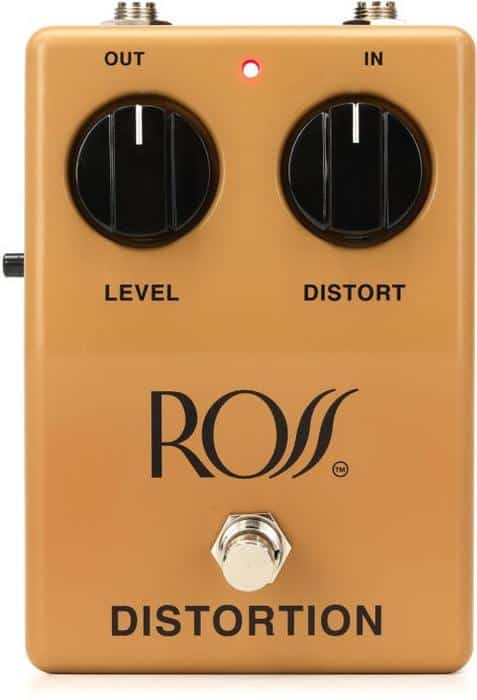
Transitioning from the broader comparisons, I draw your attention to the fine grained rivalry between two iconic pedals: The Ross Compressor and the MXR Dyna Comp. Over the years, these two have made a name for themselves in the guitar pedal realm, each with their distinct appeal to guitarists of varied genres and skill levels. My personal encounters and extensive experiments with both have equipped me to delve into a nuanced comparison that promises to enhance your understanding.
It’s necessary to recognize the profound history behind both pedals. The Ross Compressor remains legendary, bearing a reputation that parallels some of the highest echelons in the pedal universe. Its celebrated sustain and consistent volume enhancement have won over countless guitarists since its inception. On the other hand, the MXR Dyna Comp, with its impeccable dynamic control and intuitive simplicity, is commended for its adaptability across different music styles and playing techniques.
The Ross Compressor is known to provide a smoother and more rounded tonal texture, which is loved by many, but it’s the MXR Dyna Comp’s transparent and articulate sound that appeals to my personal taste. Both offer essential functionalities such as sustain and volume control, the differences lie in their unique sonic attributes. The MXR Dyna Comp seems to have the edge in terms of versatility, while the Ross Compressor excels in delivering that vintage, classic compression effect.
The verdict about which tops the other is subjective and tends to vary with specific musical contexts and personal preferences. What we can mutually agree on, following numerous pedal reviews, is that both the Ross Compressor and the MXR Dyna Comp stand as indispensable pillars in any discussion about superior guitar pedals.
My intimate engagement and extensive study with these two groundbreaking pedals dissects their unique features and impact, lending a helpful perspective as we navigate this dynamic domain of guitar effects. With this, we transition back to the broader overview, eager to explore Ross’s relevance and impact in the modern pedal market.
Ross in the Modern Pedal Market
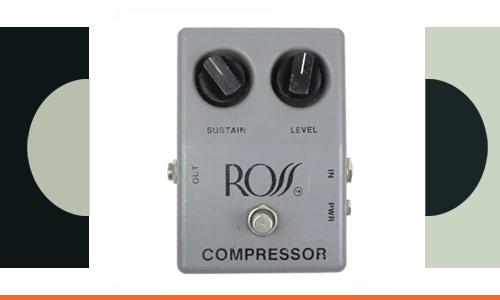
Having walked the journey and played a role in the transformation of the pedal market, I find that Ross Pedals have carved out a significant space for themselves in the modern sphere. They’ve innovated over time, infusing vintage charm with today’s technical sophistication, competing fiercely in the boutique pedals market. As such, they’ve particularly made a distinction within the reverb marketplace.
Ross is a brand that has revitalized itself, maintaining its legacy while adapting to the changing demands of today’s guitarists. Their pedals have a distinct sonic character that separates them from the rest. With the resurgence of vintage gear, aficionados in the boutique pedal market have rediscovered Ross as a viable and exciting option.
While boutique pedals often gravitate towards complex algorithms and extravagant designs, Ross remains steadfast in its grittiness. Their pedals exude a character that’s authentic, unpretentious, and reliably excellent.
Ross’s success in the pedal market is no fluke, it’s their acknowledgement of a diverse market, coupled with their willingness to stay true to their roots, that keeps them relevant. Their commitment to high-quality components and sound excellence has kept their reputation intact amongst a wave of new digital entrants. Ross Pedals symbolize a balance between classic analog warmth and modern expectations.
As we delve deeper into comparing Ross Pedals with other brands in subsequent sections, you’ll see Ross’s unique position within this dynamic, fluctuating market. Emerging within the evolution of musical technology, Ross Pedal’s ardent dedication to integrity and quality makes them a standout option for discerning guitar players.
Effects Chain including Ross Pedals
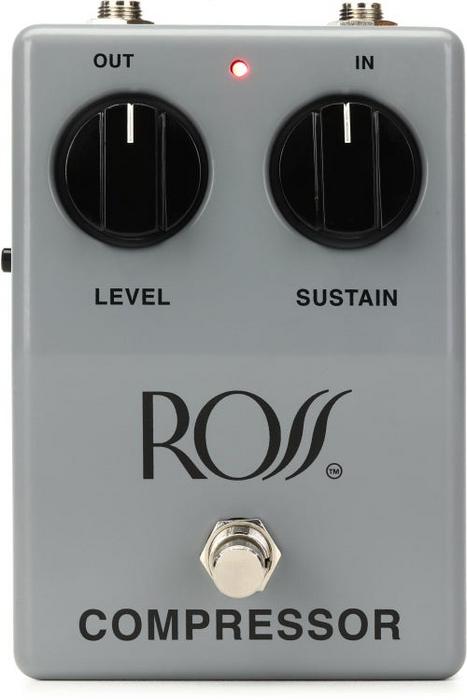
Integrating Ross Pedals into your effects chain brings a unique dynamic to your pedalboard. Positioned aptly within the signal processing flow, Ross pedals give an edge to your sound – a truth realized through my years of gigging and testing various setups. Their trademark vintage warmth imprints on any genre, but certain chains really make them sparkle. I’ve discovered configurations for blues, jazz, metal, and even experimental ambient sounds where the Ross Pedal integration shines distinctively. Adapting and incorporating these pedals into different genre-specific chains creates a sonic ambience that no other setup can replicate.
FAQs
What are Ross Guitar Effects?
Why are Ross Guitar Effects popular?
How do Ross Guitar Effects compare with other brands?
Conclusion
So, why should all those hours spent understanding, comparing, and discussing Ross pedals matter to you as a musician or an audiophile? After years of musical experience, and countless hours spent testing and reviewing gear, I hope this comprehensive overview of Ross guitar effects has illuminated the answer for you.
These musical tools, from the original models to the Ross pedal reissue, are part of a legacy within the realm of guitar gear. The unique features that Ross pedals possess, from their unmissable tone shape to their solid construction, set them apart, as we’ve unfolded in our comparison to others in the market. If you’re a musician who values these characteristics, this nuanced understanding of musician equipment will be invaluable.
Certainly, the evolving journey of Ross in the modern pedal market speaks volumes about their significance. Their place in the effects chain of numerous esteemed professionals is not to be waved off. Indeed, with this newfound depth of appreciation I believe you’ll fulfil your potential as a discerning audio connoisseur or master musician – making these hours spent diving into the world of Ross pedals more than worthwhile.